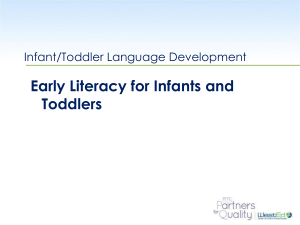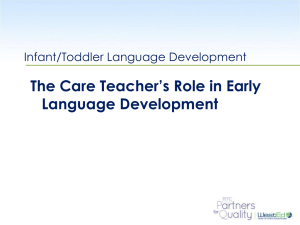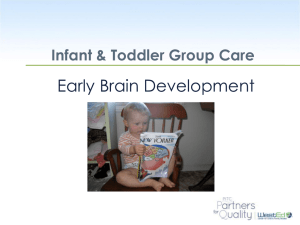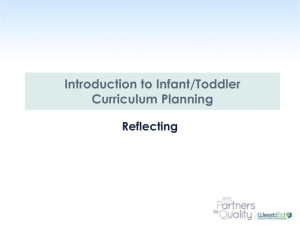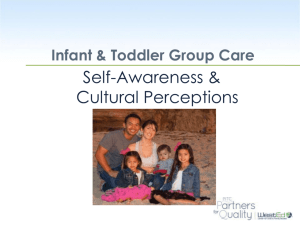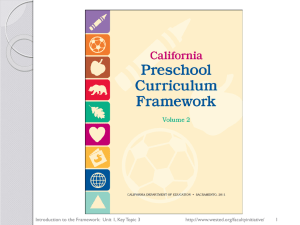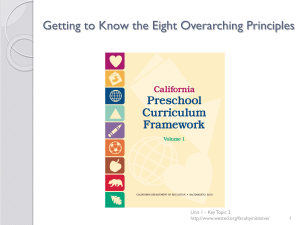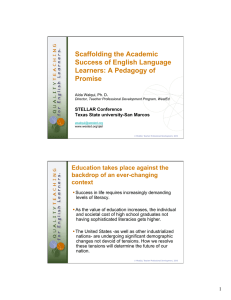English - The Program for Infant/Toddler Care
advertisement
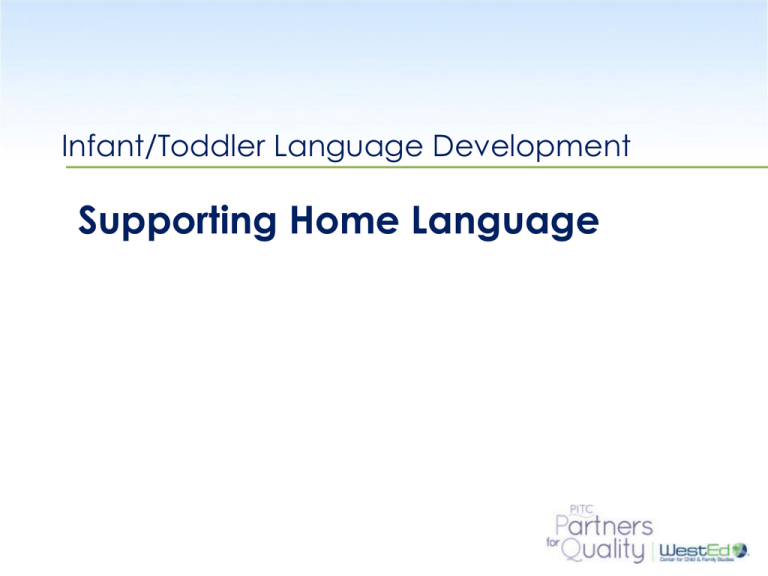
Infant/Toddler Language Development Supporting Home Language WestEd.org Homework Discussion • In your group, share one of the strategies you developed for enhancing your language promotion skills. • Answer the following question: Were you more aware of your interactions with children as a result of reflecting on these questions? WestEd.org Reflection In your group, discuss and record your responses to the handout “My Beliefs About Second Language.” Zero to Three: Cradling Early Literacy: Module 2: Session 5; Emergent Literacy in Two Languages WestEd.org “For young children, the language of the home is the language they have used since birth, the language they use to make and establish meaningful communicative relationships, and the language they use in constructing their knowledge and testing their learning. The home language is tied to children's culture, and culture and language communicate traditions, values, and attitudes.” National Association for the Education of Young Children (NAEYC), 1995, p1, Zero to Three: Cradling Literacy WestEd.org Learning Objectives Participants will be able to: • Reflect on how different cultures have different, yet equally valid, communication styles that should be recognized and honored. • Examine how child care in the child’s native language supports the child’s ability to communicate and identify with her/his family. WestEd.org Learning Objectives (continued) Participants will be able to: • Discuss how a positive cultural identity provides the child with an important sense of self and family belonging that supports a wide range of learning capabilities. WestEd.org Consider the following statements: •“Why do we need child care in the child’s home language? “ •“My parents came to the United States not speaking English.” •“I went to kindergarten and learned English. “ •“My English is great.” WestEd.org Early Messages DVD Clip: Supporting Bilingual Development Early Messages: Facilitating Language Development and Communication, California Department of Education and WestEd, 2006 WestEd.org BREAK WestEd.org What Research Says About Home Language Increasing numbers of children under three years of age are cared for outside the family. For infants whose home language is not English, there are some issues we need to consider. a. Many language experts believe that children do best with a solid start in their home language before attempting to learn a second language. From: PITC Trainer’s Manual Module III, Lesson 10 WestEd.org What Research Says About Home Language b) Researchers also emphasize the role of the home language in maintaining the bond between the child and family. c) With children from a truly bilingual home, hearing English in child care is not such a serious problem, but hearing the non-English language also will support the child’s identification with both cultures. WestEd.org What Research Says About Home Language d) Children learn language when they are “bathed” in a rich linguistic environment. e) Children from non-English-speaking families will have a hard time being bathed in their home language if they are cared for by Englishspeaking caregivers for 8 to 10 hours a day. F WestEd.org What Research Says About Home Language Although some research shows that young children are capable of learning more than one language at a time, a growing number of studies suggest that, from birth through age four, children should be cared for in settings that support them in learning the home language. WestEd.org What Research Says About Home Language Supporting children’s home language in group care settings is best done through the assignment of a primary care teacher who speaks the child’s language. The rationale for this position is as follows: a) There is a strong need for children to learn both languages. b) Children need the home language to be able to communicate with their families and identify with their culture of origin. WestEd.org Reflection With your group, discuss the following questions: 1. What would the infant’s experience be, if the care teacher speaks the child’s home language? 2. How would the infant’s experience differ if the care teacher does not speak their home language? 3. What message might an infant get if the care teacher cannot communicate with the family? 4. What message might the family get? WestEd.org Supporting Bilingual Development As you view this video clip, reflect on the strategies you can use to support bilingual development. WestEd.org Working With Diversity In your group, read and discuss Handout #24: Cultural Differences in Adult-Child Communication, and reflect on the following questions: • What are some issues raised in this handout? • Based on what you read, what do care teachers need to consider when facilitating language for children from non-English speaking homes? • What if we all speak the same language – do the issues raised in this handout still apply? WestEd.org What Does that Mean? In your group, read the scenario about Antonio. 1. Figure out what the words mean. 2. What do you think would help Antonio to understand what is being said to him? 3. How might he be feeling? 4. What knowledge do you have as an adult that helps you with guessing what certain words mean? Zero to Three: Cradling Literacy: Module 2: Session 5; Emergent Literacy in Two Languages WestEd.org Summary It is important to remember that learning a second language can be a traumatic, stressful, and even painful process for young children. Young children need care teachers who can be sensitive to their individual and cultural language needs. The home language is tied to children's culture, and culture and language communicate traditions, values, and attitudes. WestEd.org



